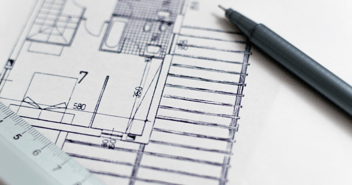
How to Tell When to Refinance Your Mortgage
For homeowners all across the country, one of the most confounding mortgage decisions is when refinancing is the best financial move. While your mortgage lender can offer valuable insight into current conditions, knowing the most common reasons for a refi can prepare you to take action when the time is right.
Read on for insight into why you should refinance and when it’s the right time.
To Lower Your Interest Rate
Put simply, refinancing your mortgage is the act of taking out a new mortgage to pay off the balance of your old one. When the interest rate for the new loan is notably less than the interest rate on the old loan, you stand to save thousands of dollars over the course of your mortgage—assuming the savings are enough to cover the closing costs associated with the refinance. Deciding whether or not it’s the right time to refinance can be a tricky decision to make—which is why it’s so important to bank somewhere that offers excellent rates on home loans.
To Shorten Your Term
Traditionally, mortgages are amortized over a period of 30 years. This helps to keep the monthly cost of the home loan low but results in paying more in interest over the life of the loan. For some people, refinancing a mortgage to a shorter 15-year mortgage and making a higher monthly payment is the perfect way to spend less money in the long-term, but more money in the short-term. Ultimately, deciding which loan length is best for your financial future is a decision only you can make, but it helps to understand the benefits and drawbacks of each option.
To Change Your Rate
Generally speaking, there are two main mortgage types—adjustable-rate mortgages (ARM) and fixed-rate mortgages. When you refinance your home loan, you can switch from one to the other. An ARM is a loan where the interest rate of the loan changes over the loan’s lifetime. The interest rate is often lower and fixed for a period of three to 10 years at the start of the loan and resets periodically—often yearly or monthly. These loans are generally a good idea if you don’t intend to live in the home you are purchasing for the long-term. A fixed-rate mortgage is a loan that has a single, set interest rate over the entire life of the loan. If interest rates are rising, a fixed-rate mortgage is less risky than an ARM, which may have you paying a higher rate in the future.
To Consolidate Debt (Cash-Out Refinance)
Accumulating large balances on high-interest credit cards has gotten many Americans into tricky predicaments when it comes to managing their finances. The problem with high-interest credit card payments is that, as balances build, they can become increasingly difficult to pay down. That’s where refinancing your mortgage can help. Interest rates on home loans are typically far lower than the interest rates found on credit cards. Homeowners who are finding themselves underwater with their high-interest credit card payments can opt for a cash-out refinance.
In this situation, you would take out a new mortgage loan to cover both the cost of your home and the cost of paying down your credit card balance. For example, say you had a home loan of $150,000 on a home worth $200,000 and you wish to pay off a credit card balance of $10,000. In this scenario, you would take out a new loan for $160,000 to cover both the cost of paying off your original loan as well as the cost of paying off your credit card debt. This allows you to shift your debt from high-interest to low-interest and consolidates your credit card debt and home loan into a single, monthly payment.
There are many situations where refinancing your home loan could prove to be beneficial, so it’s important to talk to a lender before making your decision. Armed with these examples, you’ll be more prepared to tackle your financial future, no matter what that looks like for you.

 605-334-2471
605-334-2471


